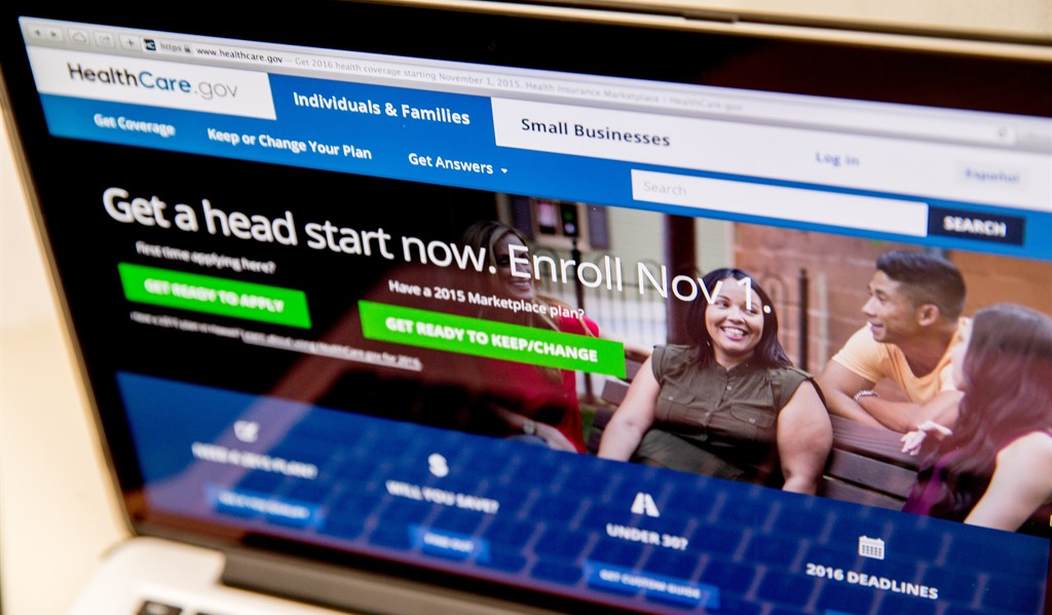The Department of Health and Human Services issued a report Tuesday which found that individual market premiums have doubled under Obamacare. From the report:
Comparing the 2013 average premiums using the MLR data with the 2017 average premiums obtained using CMS MIDAS data shows average premiums were 105% higher in 2017 than in 2013 and that the median state premium increase was 108%. Moreover, 62% of states using Healthcare.gov had 2017 average premiums double average premiums in 2013. Further work could approximate the relative contribution of the various ACA provisions, such as benefit mandates, guaranteed issue, and rating rules, to the overall premium increase in this market.
So the bottom line here is that premiums have more than doubled in 4 years. That’s a pretty striking result and, as you’d expect, supporters of the law are already reacting by pointing out various flaws in the report. Let’s look at a few of those. Charles Gaba at ACASignups offers five different points in response. I won’t look at all of them in detail but let’s consider his objections. If you don’t want to get into some of the details, you can skip down a few paragraphs.
First, Gaba notes that insurance rates go up every year. That was true before Obamacare which means some premium inflation would have happened anyway under the old system. He writes, “If you’re going to “blame” the ACA for rate hikes, you have to subtract the difference between how much they would have gone up in the absence of the law.” That’s fair enough. So how much would they have gone up without Obamacare? Gaba thinks 5% per year is fair but one of his regular commenters argues for 4%. So the cumulative increase would be either 17% or 22% over 4 years. That means the additional increase under Obamacare is either 83% or 88 percent. That’s still a significant amount, obviously.
Second, Gaba argues that pre-Obamacare plans can’t really be compared to post-Obamacare plans for a number of reasons, including the fact that a couple million of the pre-Obamacare plans were mini-med plans which only provided coverage worth a couple thousand dollars a year at most. If you wound up in the hospital or needed surgery, they were no help. Here again, some of Gaba’s commenters argue that it’s not clear these mini-med plans are being counted by HHS in their pre-Obamacare averages. Obviously, if those plans aren’t being counted then this objection doesn’t hold up.
Gaba’s next two objections have to do with the ability of insurers in the pre-Obamacare days to reject people with pre-existing conditions and to set annual and lifetime caps on coverage, things they can’t do under Obamacare. Again, it’s not clear how much of a difference these changes made. Some people with pre-existing conditions did have insurance under the old system, either because they had never let their insurance lapse or because the insurer took them on despite their condition (which did happen). Also, one of Gaba’s commenters points out nearly 3/4 of plans sold under the old system had no spending caps.
Basically, points 2, 3, and 4 are all arguments why the pre-Obamacare system and the current system are an apples to oranges comparison. But here’s the problem. No one denies the new system is different or that it offers advantages to some people (and disadvantages to others), but the fact remains that the cost of those advantages is significant. That’s why networks are shrinking and why deductibles have gone up. And that’s also why it was dishonest and irresponsible of President Obama to tell people their premiums would go down by $2,500 a year and that they could keep their plans and doctors.
And that brings us to the last point. The doubling of premiums does not take into account government subsidies. The vast majority of people buying these plans on the exchanges get subsidies and are insulated from most of the increase. Of course, someone still has to pay the extra cost. In this case, it’s the taxpayers. In addition, millions of people buy their plans off-exchange and are not getting subsidies. Those folks get hit with the entire increase which was 24% last year. So it’s true many people with Obamacare plans won’t see the increases, but they are there nevertheless.
The real question is whether or not Obamacare would have ever gotten off the ground if Democrats had presented the American people with the truth, i.e. this plan will ensure many more people can get good coverage, but the average cost will more than double over the next four years. How would that sales pitch have gone? Democrats could have called it the Universal Care Act instead of the Affordable Care Act, but they didn’t do that. Misleading people about what was likely to happen under the bill was central to getting it passed and now we’re all stuck paying the costs that were downplayed by the authors of the bill.








Join the conversation as a VIP Member